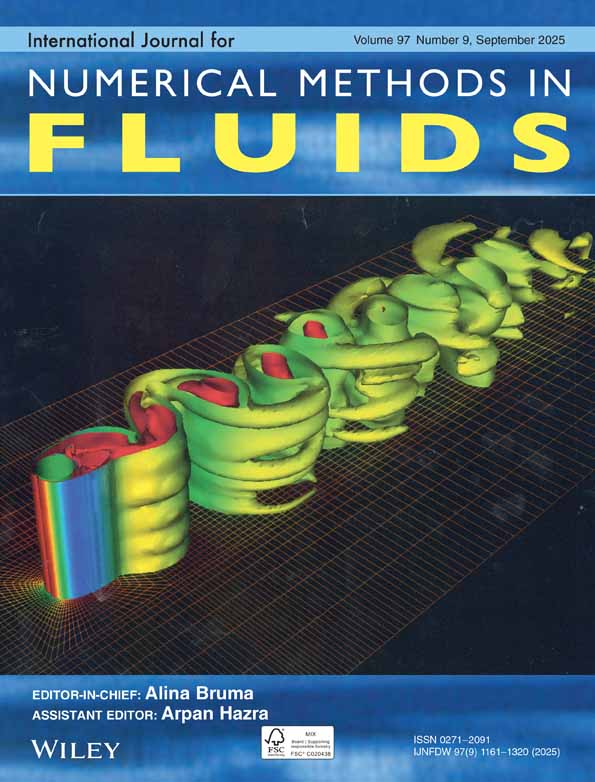A finite element simulation of the cross-effects of viscoelasticity and inertia in an agitated vessel
Abstract
Numerical simulation by a finite element method is used to examine the problem of the rotating flow of a viscoelastic fluid in a cylindrical vessel agitated with a paddle impeller. The mathematical model consists of a viscoelastic constitutive equation of Oldroyd B type coupled to the hydrodynamic equations expressed in a rotating frame. This system is solved by using an unsteady approach for velocity, pressure and stress fields. For Reynolds numbers in the range 0.1–10, viscoelastic effects are taken into account up to a Deborah number De of 1.33 and viscoelasticity and inertia cross-effects are studied. Examining the velocity and stress fields as well as the power consumption, it is found that their evolutions are significantly different for low and moderate inertia. These results confirm the trends of experimental studies and show the specific contribution of elasticity without interference of the pseudoplastic character found in actual fluids.




